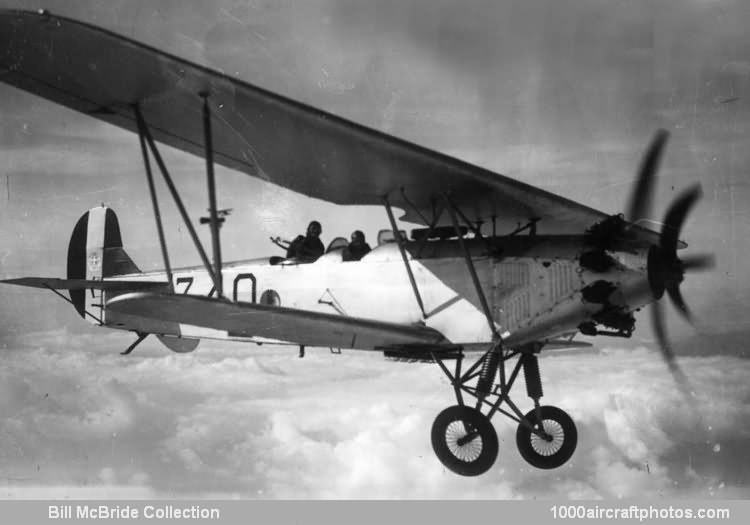The advantages of various wing-sets of different spans which became apparent in the C.IV model caused Fokker to continue this policy in its successor, the C.V, the prototype of which first flew in May 1924. The five wing sets used on the C.V were known as A, B, C, D or E wings (differing in span and area) and these designated the variant of the C.V when thus fitted. The fuselage, tail unit and landing gear remained standard throughout. Another aim of the designers was to achieve interchangeability of engines in the 250-500 hp range. It was considered that wings and engine could be changed in one hour.
This cantilever wing two-seater, with fabric covered tubular-framed fuselage, proved extremely successful in its various roles and the 154 aircraft of the type, built in the parent factory, were purchased by Holland, the Dutch East Indies, Finland, Bolivia, China, Japan, Switzerland, Denmark, Norway, Sweden, Hungary and Italy. The five last-named countries also license-built variants of the C.Vs.
The C.V-E light bomber/strategical reconnaissance model, fitted with 'E' wings, appeared in 1926 and was powered by a 475 hp Lorraine-Dietrich engine. Alternative 450 hp engines used were the Hispano-Suiza, the Napier Lion and the Bristol Jupiter. Some later C.V-Es had strengthened landing gears with streamlined struts from axle to under surface of the top wing. In 1934 a number of improved C.V-Es with the 730 hp Bristol Pegasus engines were adopted by the Scandinavian countries. In Finland some of these had ski landing gears, and fought in the war against Russia, possibly until 1944.
In Italy, the Officine Ferroviarie Meridionali, a subsidiary of the Romeo automobile organization, constructed 349 C.V-Es at their Naples plant. Those powered by the license-built Jupiter, the 420 hp Alfa Romeo Jupiter, were designated Ro.1, those powered by the license-built Bristol Jupiter, the 550 hp Piagio Jupiter VIII, were designated Ro.1-bis. Ernesto Breda's Milan factory also constructed some examples of the type.
Armament consisted of one fixed forward firing 0.311 in (7.9 mm) machine gun and one flexible 0.311 in (7.9 mm) machine gun for the observer. A bomb load of sixteen 17.6 lb (8 kg) or four 110 lb (50 kg) bombs could be carried. The aircraft were operated in Tripoli and Italian Somaliland as well as internally.
Several record-breaking flights were carried out in the Italian-built version, including the formation flight from Naples to Tripoli in October 1927. In April 1928 a formation of nine machines led by Major Bitossi flew from Rome to Mogadiscio in Somaliland, a distance of more than 6,214 mls (10,000 km), and the first occasion on which Italian aircraft arrived for service in this colony under their own power."
